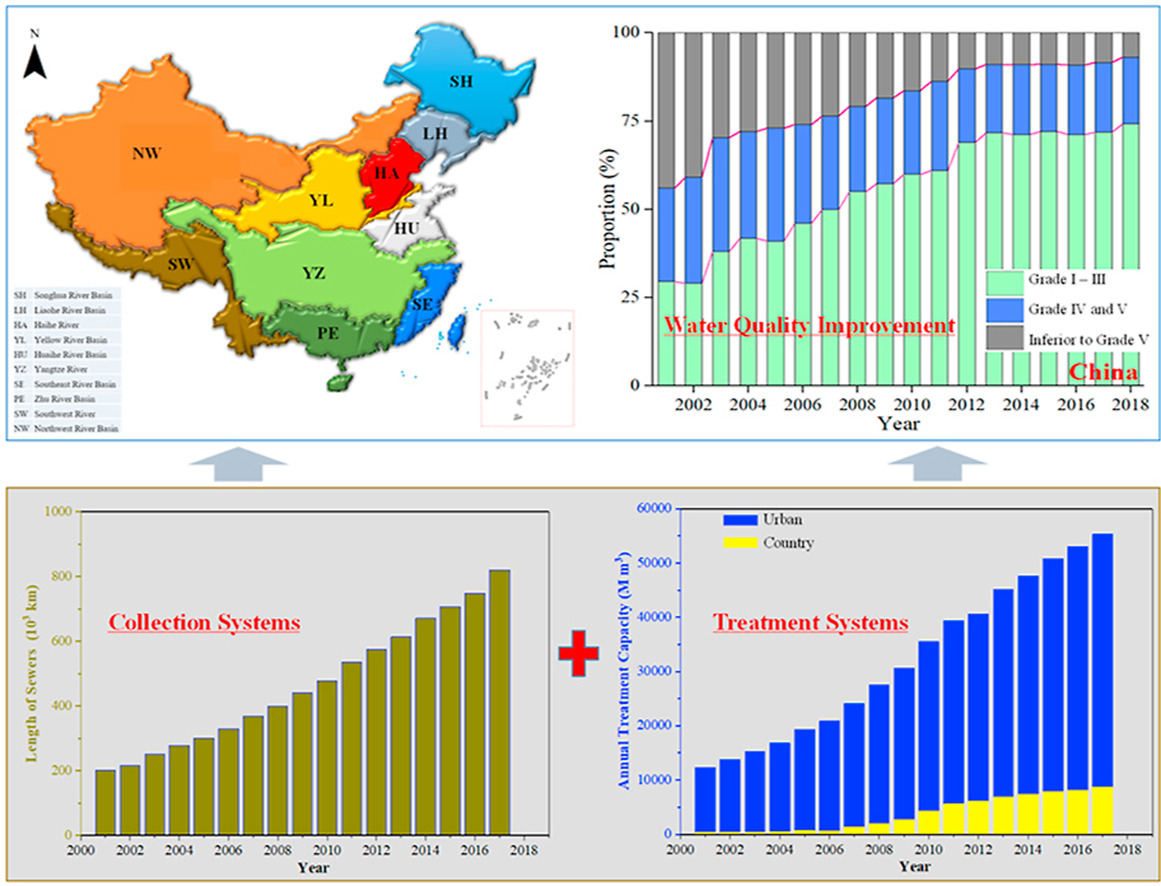Ⅰ.CURRENT SITUATION
China’s current water crisis is driven by two primary factors. The first of these is China’s uneven distribution of water. Because of its large and diverse geography, China has a wide spectrum of terrains and climate zones. While southern and eastern China enjoy abundant rainfall, the northern and western regions of the country receive very little. This weather pattern can lead to unfortunate and seemingly contradictory effects, with some provinces battling floods while others are suffering from months-long droughts.
Besides the disparity in water supply between the north and south, China’s water crisis has a second factor: pollution. Even in water-rich areas of China, pollution is decreasing the supply of clean, usable water. According to estimates, a full 70 percent of China’s rivers and lakes are currently contaminated, half of China’s cities have groundwater that is significantly polluted, and one-third of China’s landmass is affected by acid rain.

Ⅱ.WATER POLLUTION
Water pollution in China is such an issue, to the point that the World Bank cautioned of “catastrophic consequences for the future generation.". According to the World Bank two third of China 's population use water contaminated by human and industrial wastes and half of them use Hazardous drinking water. Water pollution in China reduces the unadulterated water source, destroy the natural beauty, expanding the wellbeing issues and eventually crumple the economic system to create the living conditions more miserable. China is the world 's most populous nation that experiences water contamination. Around 70% of China 's rivers and lakes are polluted and they are risky for human contact. Health concerns have been evoked as it has been demonstrated that water contamination causes gsotraintentianl and different sorts of cancers.

Ⅲ.WATER SHORTAGE
China’s water supply problems are well-known globally. However, the main problem facing China is how to distribute its water, rather than lack of water per se. 80% of China’s water supply lies in southern China. But this water cannot be used by the population of 12 Chinese provinces representing 41% of its total population, 38% of Chinese agriculture, 46% of its industry, and 50% of its power generation. Eight of these provinces are currently experiencing acute water scarcity, while in four provinces water is merely “scarce,” and two provinces are largely desert. Moreover, the problem is getting worse, with 28,000 rivers in China having dried up over the past 25 years. And China’s appetite for water continues to grow, with consumption forecast to rise to 670 billion cubic meters a year by the early 2020s.
Adding to the problem is the fact that coal mining is a water-intensive as well as polluting process, and 85% of coal reserves in China are located in provinces where water is scarce and must be shared with a large agriculture industry. Reportedly 20% of all water use in China is for mining, processing, or consumption of coal, and almost 70% is for agricultural purposes. Rapid growth in water demand, combined with a reliance on groundwater drawn from aquifers, has resulted in a new problem — subsidence. This poses a threat to over 50 cities in China and is being closely monitored by the government.
China’s power shortfalls and structural water shortage are intimately linked
Coal, hydro, and nuclear power generation all require significant water resources in order to maintain output. Combined, these three sources comprise more than 80% of China’s power capacity.

Ⅳ.Potential resolutions
The South North Water Transfer Project (SNWTP) is a mega-scale engineering project designed to divert 44.8 billion cubic meters of water from the south to the north. The SNWTP has the potential to bridge the water gap between the south and the north. However, the SNWTP already services three dry provinces, and would not provide enough water to meet the needs of the 12 provinces currently experiencing water scarcity.

Desalination would provide additional water, but is generally not considered a viable option due to its energy-intensity, and in China, generating the energy needed requires around half the amount of water that would be produced. Raising the price of water is another possibility, particularly in dry regions, but also has the potential to put enormous pressure on water-intensive industries. Moreover, this could result in such companies moving to less regulated regions if increased water prices are implemented only on a local level.
Ⅴ.WATER PROBLEM